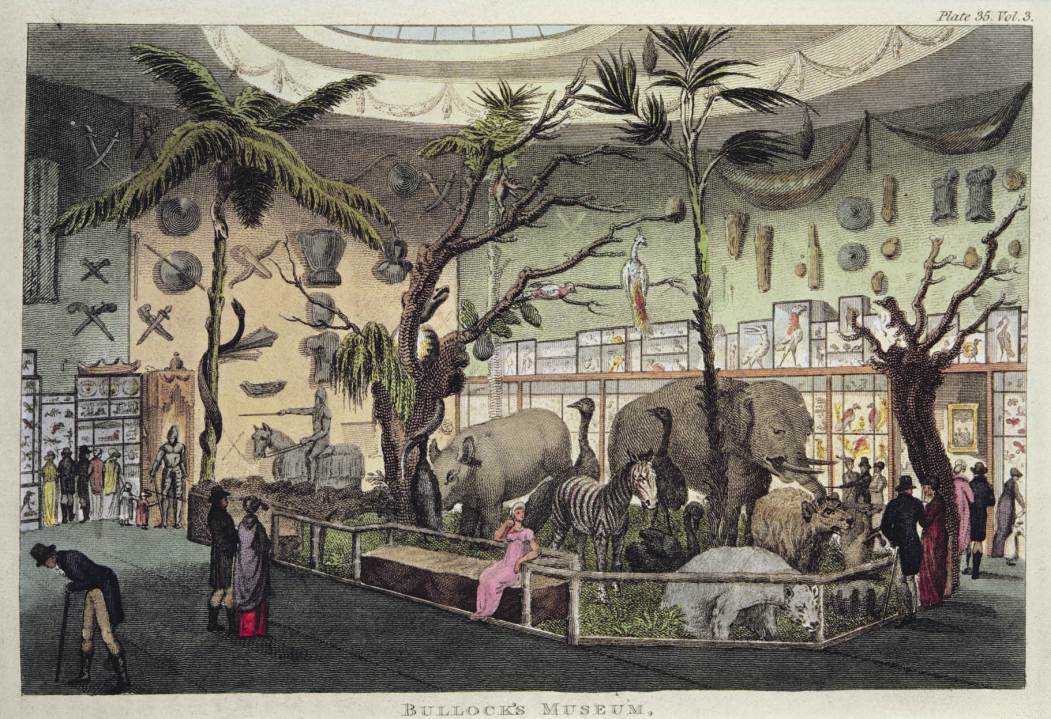Something in the air is arousing an interest in collectors and collections — both private and public — of which the success of The Hare with Amber Eyes and The Children’s Book are perhaps the most visible recent examples.
Something in the air is arousing an interest in collectors and collections — both private and public — of which the success of The Hare with Amber Eyes and The Children’s Book are perhaps the most visible recent examples. Jacqueline Yallop’s book is firmly in this vein, deploying an astonishing breadth of research to reveal, in a blend of narrative, contextual history, museology and biography, some of the forgotten stories that lie behind the scenes (literally as well as metaphorically) of many of our greatest museum collections.
Against a background of massive exhibitions, early museum policy and social and artistic snobberies, Yallop tells the tale of five individuals with differing interests and aspirations. The only museum professional amongst them is John Charles Robinson, the son of a Nottingham printer and auctioneer, a trained artist whose forceful character took him from a Government School of Design in Hanley to the South Kensington Museum — now the Victoria and Albert — in its first heady years. There he found himself in a state of more or less constant war with Henry Cole, the museum’s original director.
Determined to acquire more than just instructive pieces from which British designers and manufacturers could learn (in line with the museum’s founding remit), Robinson ranged across a Europe still awash with objects dispersed from royal and aristocratic private collections, buying paintings, sculpture and artefacts purely on their aesthetic merits. Like a boy in a sweet shop with government money to spend — and overspend — he didn’t hold back. Furious rows developed in London, with Cole adamant that Robinson was not just exceeding his brief but misdirecting his efforts, and Robinson contemptuous of Cole’s lack of connoisseurship. It proved to be an irreconcilable breach and Robinson, sacked, turned to private dealing.
Charlotte Schreiber, ‘Chinamaniac’ widow of a Welsh ironmaster, haunting the desolate streets of post-Commune Paris in search of booty; Joseph Mayer, silversmith, philanthropist and benefactor of Liverpool Museum; Stephen Wootton Bushell, Peking Legation doctor and orientalist — theirs are all fascinating stories, but perhaps the figure here with the most contemporary resonance is Murray Marks, a man who ought to be better known for his influential role in shaping the pre-Raphaelite aesthetic and as a forerunner of the celebrity interior designer of today. A friend of Rossetti, he was at the heart of the craze for blue-and-white china, and closely involved in the supply of vases for the controversial ‘Peacock Room’ decorated for Frederick Richards Leyland by Whistler. His shop on Oxford Street was ground-breaking in its display of goods in a clean, bright atmosphere, and he was revolutionary in staging lavish dinners served on the very china that was for sale. In 1877 it was to him that the founders of the Grosvenor Gallery turned for advice on decoration. Like all of the collectors in this book, Marks gave, sold or bequeathed numerous rare, beautiful or interesting objects to our public museums.
By contrast, Yallop’s final collector, Stephen Wootton Bushell, a doctor posted to the British Legation in Peking in 1868, was a natural academic. Pottering around Peking he sought out fine examples of oriental art and craft and dispatched them back to South Kensington and the British Museum. His ten-volume catalogue of the collection of William Thompson Walters, Oriental Ceramic Art, was a decade in the writing, and with two other works on oriental art was a lasting testament to an amateur working with unusual tact and diligence in a field little known in Europe and during a brief window of opportunity between the Opium Wars and the Boxer Rebellion when friendships and enquiries among local craftsmen, traders and dealers were possible.
Few people would think of writing this book — it is a loose, baggy monster of a work, its themes and characters not easily corralled into a linear narrative — but we should be grateful for it. It is a fascinating read — one that deserves more illustrations — and shines a light on collectors who thought that they would be permanently remembered, but whose achievements have largely been forgotten. It shows that there is little new in the museum world, whether it be dwindling purchase funds, the suitability of acquisitions or the developing debate over display philosophies. It touches on the ethical minefield of acquiring looted objects, de-accessioning, the problems of proving authenticity, the loss of British collections to America — and all this in the mid 19th century.
Any general reader interested in our museums will enjoy the flavour it gives of how so much of the ‘stuff’ that now lies mostly in storerooms got there. The sheer scale of it all still astonishes: in 1862 the South Kensington Museum staged a loan exhibition of 9,000 works of art from 500 private collectors in Britain. But much of the rest will be wryly familiar to anyone who has been involved in public collections.






Comments